Last Updated on October 31, 2024 by Ellen
There are two unique small museums I really enjoyed in San Cristobal de Las Casas, Mexico. One features creatures trapped in resin from some 30 million years ago, and another features a couple’s work with an indigenous group of Maya – a group that has just a few members left today.
Na Bolom
Na Bolom is a museum featuring information on the lives of Frans Blom and Gertrude Duby – an explorer and a photojournalist – and their work over decades to help the Lacandon Maya in the State of Chiapas. The couple’s former home in San Cristobal Casa Na Bolom – or House of Jaguar – is now the museum, and it’s a treasure.
The life of Lacandon Maya is described in placards in several rooms in the former hacienda in English and in Spanish, so we were able to fully understand the history. (Often smaller museums don’t have any literature in English, or it’s limited English, so our comprehension lacks.)
Frans was an explorer and archeologist with a documented drinking problem. Trudi was a former journalist who married him and documented their adventures through beautiful humanistic photographs now on display throughout the museum. She was a social anthropologist in the second half of her life.
One thing I love about their love story: they didn’t meet until later in life – but they still had years to spend together doing what they loved – working with their Maya friends.
However, it wasn’t always an easy love. Trudi sometimes left Frans for months at a time when he went on a drinking binge. Plus, they were living and working in primitive conditions in a Mexican rainforest and jungle, when they weren’t in their home in San Cristobal. They came together during World War II, and they later married around 1950: Frans was about 57, she was about 50.
The typewriter Frans used to document his explorations of Chiapas is on display, as well as maps he created, an old phone he used, a bottle of Mezcal, his favorite chair, and various pieces of Lacandon life such as bows and arrows, jugs, canoes, and more.
Their library is filled with amazing books, paintings, photographs, Lacandon trinkets, and various other items they used in their life in Chiapas. In one old photo, Frans sits in his favorite chair by the library’s fireplace and the same paintings on the wall behind him in the photo hang in the same spot today.
Trudi’s jewelry and her famous coke-bottle-like glasses also are on display. Her pictures are everywhere: of Frans, Maya friends, life in the jungle. Sometimes, someone else took the camera and snapped shots of Trudi. One of her in her later years leaning on a friend really struck me.
Some of Trudi’s diary excerpts are quoted in placards throughout the museum. One entry on reads: “You cannot label the Lancandon Indians as sad. Why would they be sad when they own the jungle? They have a very pronounced sense of humor; they are always ready to laugh and tease.”
Another diary excerpt: “They are being taught to read and write in a language to which they have no social relationship. And of course, when they drop out of school, they forget all those symbols that are useless to them.”
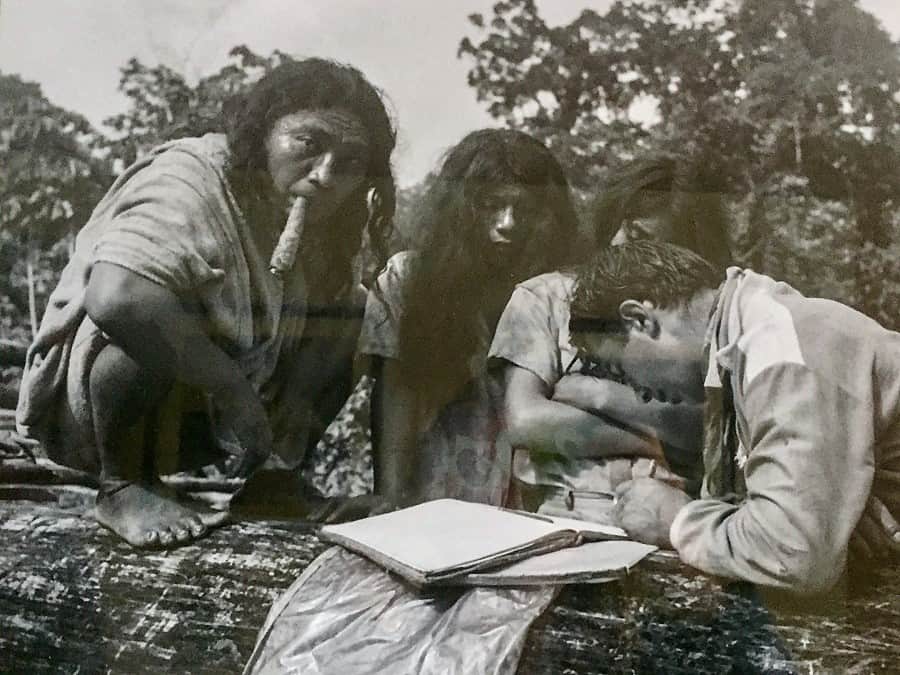
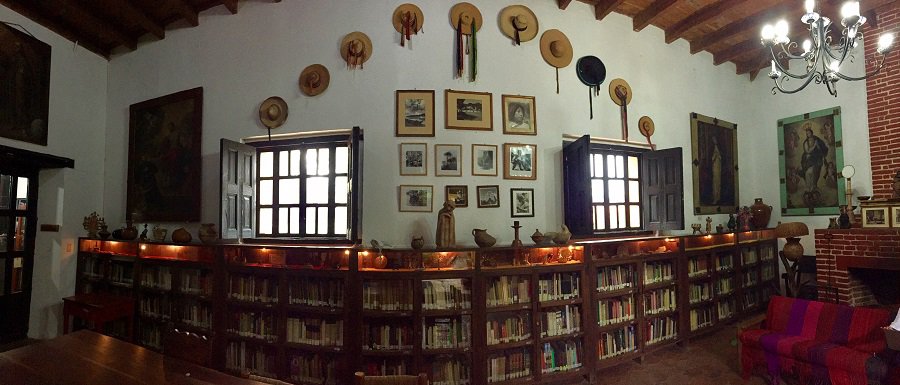
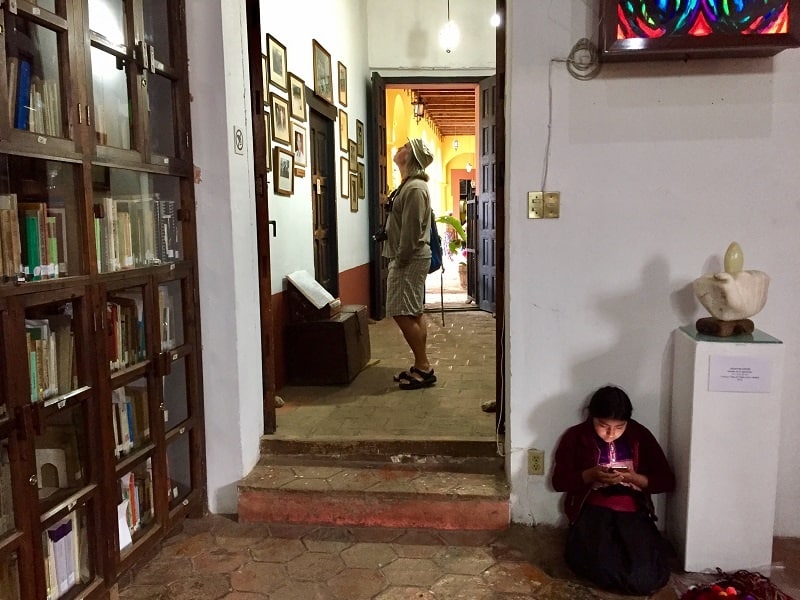
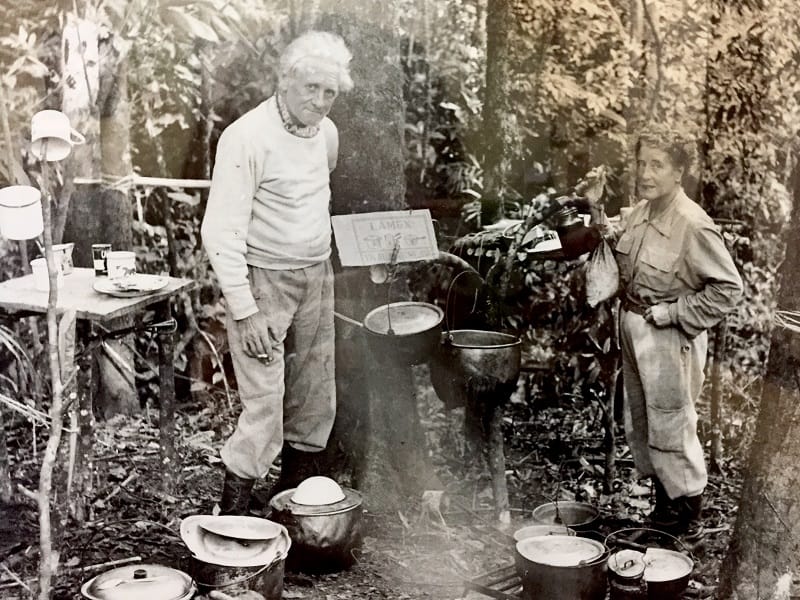
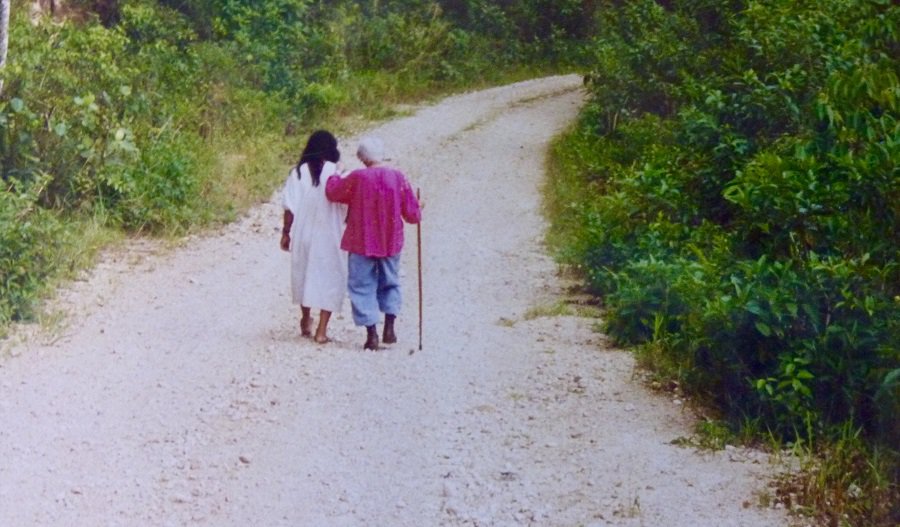
My pictures of Trudi’s pictures just do not do these images justice. These photographs of this couple’s beloved Maya friends need to be seen in person. These are the displays that moved me most: their faces – their lives – snapshots of their time on earth – their smiles.
There also are stories about how the Lacandon give offerings and pray to the gods, and anecdotal tales on how the jungle began to vanish when civilization encroached on their sacred land.
Part of one story: “It used to be that you had to ask permission to cut trees. Before you had to ask permission to hunt animals. You had to ask on your knees. There were many trees at that time and the King was happy. Once, a person who did not know about the King cut down some of his trees and he instantly got sick, because the trees are the King’s sons. The King cried for his children. But after awhile, there were more people and no one asked permission from the King of the Selva.”
The group’s rainforest is protected by the government. Part of it is an ecotourist destination, but it does not attract too many tourists. Na Bolom will arrange trips for adventurers to visit the Lacandon, either on a home stay or through camping.
Today, there are only about 1,000 Lacandon people who speak the Mayan language.
Admission to Na Bolom is just 50 pesos each ($2.94 USD at the current exchange rate). The museum also takes donations, and has rooms and small houses for rent on its grounds – there is a large garden behind the main hacienda.
Na Bolon’s website is in Spanish. Find it here.
‘Ambar’ Museum
El Museo del Ambar (Amber Museum) has some interesting history. The museum itself is adjacent to La Merced – an old Catholic church. For a time, the area where the museum now stands fell into disrepair, then was a jail, then abandoned. But what’s inside is much more interesting. It houses unique resin that dates back 35 to 25 million years.
Some of the resin has trapped mosquitoes and scorpions. I could hardly believe what I saw – creatures trapped by chance in Earth’s odd substance for millions and millions of years.
The small pieces can be difficult to see, so on top of some glass cases, there are magnifying glasses you can use to better view the incredible specimens on display.
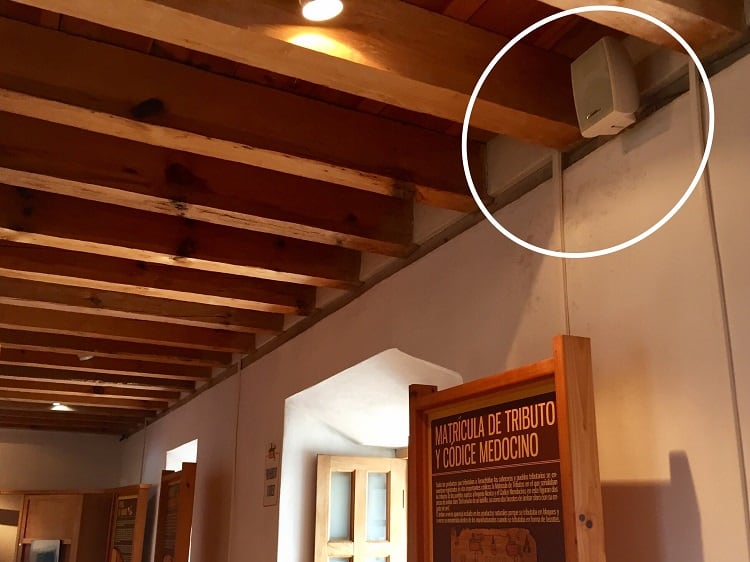
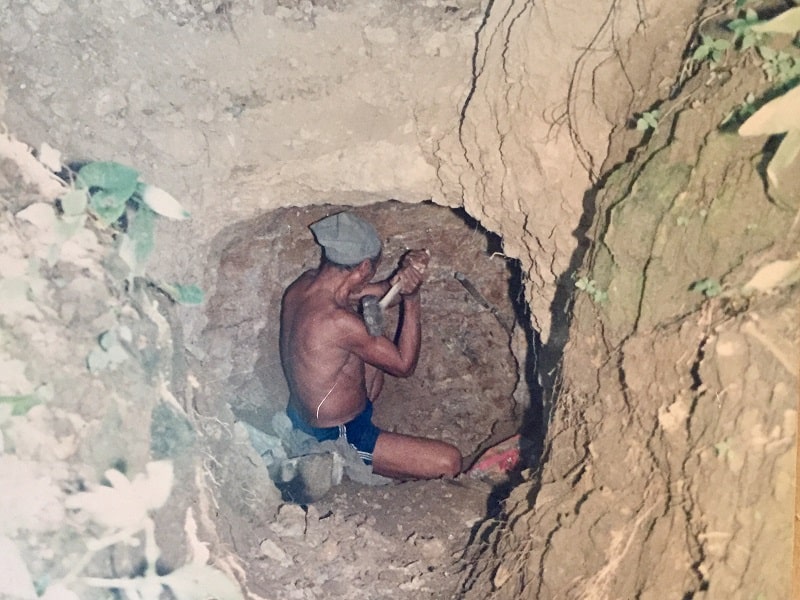
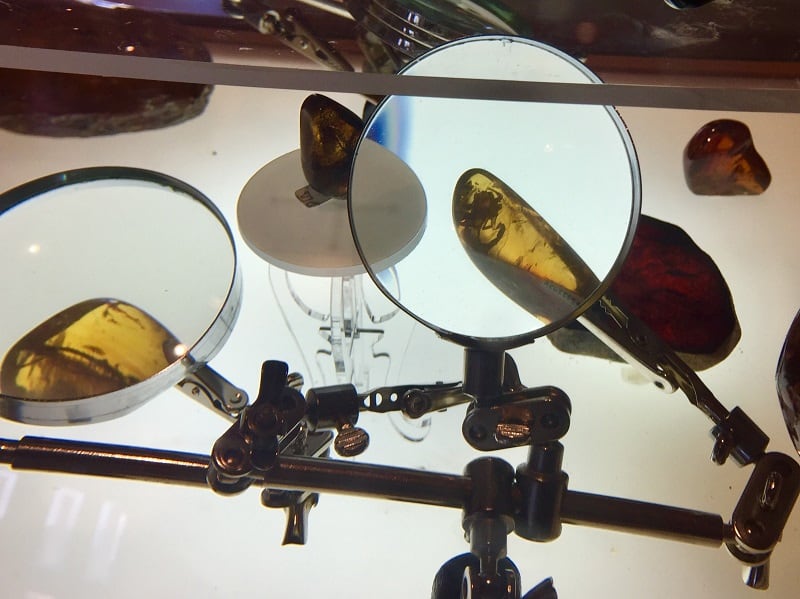
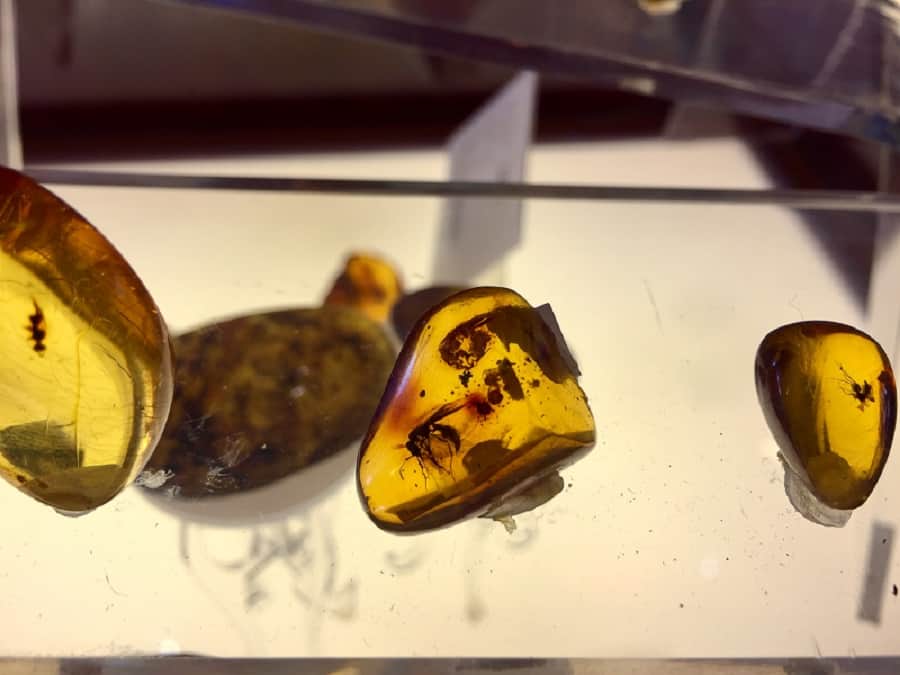
The displays are on the second floor in a long hall. At the end of the hall, there is a video that plays on a continuous loop with a few chairs to sit. The video shows visitors how to tell real amber from the fake stuff street vendors sell. The video also shows what goes into finding and cleaning the amber to make it into the polished jewelry and trinkets you see for sale and on display.
In addition to the video, pictures around the displays show the workers who mine it from the earth. It’s fascinating, and it’s difficult – and often dangerous – work.
Earth only has a few spots with amber- and the stuff found in Chiapas is unlike other amber found elsewhere on this planet.
There is a gift shop on the first floor by the entrance, and you can touch real amber and marvel at how lightweight it is. Prices seem reasonable, compared to some of the jewelry stores we’ve seen around town.
We found this was a fun visit for a few hours. Trip Advisor rates this as the fifth top thing to see in all of San Cristobal. Here is a link, but it’s in Spanish. Just note, the hours are odd for American tourists because the museum shuts down for the all-important siesta, which is one of the many things I’ve come to love about Mexico. Admission was just $3 USD for two people, and goes mostly towards the continuing restoration of this building beside the church.
One oddity about this museum: speakers played American rock music when we were there. At first we thought there was a reason – for example, we heard Scorpion and Poison and Rolling Stones. We figured, ok, the museum is known for showcasing a scorpion trapped in amber which was trapped in rock before cleaned off. But then we heard other nonsensical bands and singers – like Billy Joel and Madonna – and we just couldn’t figure out the connection.
As with many things in Mexico, as I’ve also learned and come to love, it’s better to just sometimes go with the flow. And so, we grooved to the tunes while we explored yet another thing about life on this planet during our early retirement adventure.
🙂
More museums!

Thanks for the museum tour. I too, like the pic of Trudi leaning on a friend…speaks if real life to me. Amber = Jurassic!